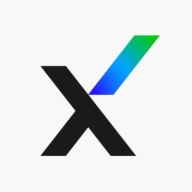


Find out what your peers are saying about Palo Alto Networks, Microsoft, Fortinet and others in Advanced Threat Protection (ATP).
The service generates a low rate of false positives, reducing the overhead of managing false positive events.
The managed service aspect of Zscaler Internet Access has allowed for reduced staffing costs, resulting in a saving of approximately 20-25% compared to prior expenses.
There is a lack of SLA adherence, and third-party partners do not provide prompt responses.
The support is quite difficult to access promptly.
The service response times are aligned with standards, responding within a few hours based on the problem's criticality.
Technical support needs improvement as sometimes engineers are not available promptly, especially during high-severity incidents.
The technical support for Zscaler Internet Access is rated around seven out of ten due to some response time issues and the engagement model.
I find customer support to be quite adequate
Wildfire is highly scalable.
Palo Alto Networks WildFire is scalable, and I give it a nine for scalability.
Zscaler Internet Access is scalable and has points of presence across the globe to ensure low latency and reliable connections.
I find Zscaler Internet Access to be highly scalable, which was one of the reasons for choosing it.
Zscaler Internet Access is stable and capable of building resilient architectures.
Zscaler Internet Access is very stable, and I would rate its stability as nine out of ten.
The dashboard should provide better visibility, especially in showing how many files are sent to Wildfire and their findings.
The support could be improved, as it takes a while to get assistance from the vendors.
There should be improvements in AI intelligence, faster decision-making, and a more responsive technical support team.
The response time and engagement model for technical support could be improved to handle complex outages more efficiently.
One feature I am missing is the ability to connect automatically to internal monitoring systems.
I would rate it an eight out of ten in terms of affordability.
Zscaler Internet Access is recognized as an expensive solution.
Zscaler Internet Access is less expensive than competitors like Palo Alto, offering a premium service justified by security enhancements and cost-effective scalability.
Integrating Palo Alto Networks WildFire with various security protocols similar to a firewall has significantly improved the overall threat detection capabilities in our organization.
The most valuable feature of Wildfire is its sandboxing capability for examining suspicious files or locations.
Trellix NDR provides an essential defense by automatically responding to network incidents that firewalls may not catch.
Its cloud-native proxy architecture ensures high availability and resilience, even in challenging regions like China.
The SSL inspection also offers added security, facilitating the exchange of critical data.



Palo Alto Networks WildFire is a highly effective cloud-based advanced threat protection (ATP) solution that organizations in a wide variety of fields trust to help them keep safe from digital threats. It is designed to enable businesses to confront even the most evasive threats and resolve them. It combines many techniques to maximize the level of threat protection available to users.
Palo Alto Networks WildFire Benefits
Some of the ways that organizations can benefit by choosing to deploy WildFire include:
Proactive real-time threat prevention. Organizations that utilize WildFire can take a proactive approach to their network security. Wildfire’s security scanning software is supported by powerful automation that enables it to run 180 times faster than other similar solutions. It also leverages machine learning to spot and address two times more malware monthly than its competitors. Users can solve issues as they arise, which prevents them from suffering severe harm.
A holistic approach to security. WildFire leverages many of the security features and characteristics that can be found in some of the most effective security solutions in a way that provides users with a powerful protective blanket. It combines such things as machine learning, dynamic and static analysis, and a custom-built analysis environment, and enables users to cover many different potential avenues of attack. In this way, organizations can easily detect and prevent even the most sophisticated threats from harming them.
Reduce overhead costs. Using WildFire cuts the expenses that a business incurs. Its architecture is based in the cloud and, as a result, users do not have to purchase hardware to run it. Additionally, those users do not have to pay anything more than a product subscription fee. They can scale it up as they wish and incur no additional costs.
Palo Alto Networks WildFire Features
Some of the many features WildFire offers include:
Third-party integrations. WildFire gives users access to integrations that can enable them to combine Wildfire’s security suite with outside tools. If an organization thinks that they are missing something, they can easily use Wildfire’s third-party integrations to bolster their capabilities. These integrations can connect to many different types of tools, like security information or event management systems.
URL filtering. Organizations can use a URL filtering feature to safeguard themselves against known threats. When this feature is active, it will scan for traffic coming from specific URLs that are known to be malicious. This keeps them one step ahead of those threats that they know about.
Deep analytics. Wildfire comes with the ability to provide users with a detailed analysis of any threat that it finds across all of their network environments. It gives users insight into everything from their natures to the actions that they have performed.
Reviews from Real Users
WildFire is a solution that stands out when compared to its primary competitors. Two major advantages that it offers are the high speeds at which it can analyze network traffic for threats and the accuracy with which it can pick out genuine threats from false positives.
Ahmad Z., the principal consultant at Securelytics, writes, “The analysis is very fast. The intermittent is a millisecond and has a speedy response time.”
Christopher B., the senior systems administrator at a government agency, says, “It gives a more accurate assessment of a virus in terms of whether it's truly a virus, malware, or a false positive. We have some legacy software that could pop up as being something that is malware. WildFire goes through and inspects it, and then it comes back and lets us know if it's a false positive. Usually, when it finds out that it's not a virus, it lets us know that it's benign, and it can exclude it from that scan, which means I don't even have to worry about that one popping up anymore.”
Detect the undetectable and stop evasive attacks. Trellix Network Detection and Response (NDR) helps your team focus on real attacks, contain intrusions with speed and intelligence, and eliminate your cybersecurity weak points.
Zscaler Internet Access is a cloud-native security service edge (SSE) platform. Its main purpose is to provide AI-powered protection for all users, all applications, and all locations. The solution replaces other legacy network security solutions to stop advanced attacks and prevent data loss by using a comprehensive zero trust approach.
Zscaler Internet Access Features
Zscaler Internet Access has many valuable key features. Some of the most useful ones include:
Zscaler Internet Access Benefits
There are several benefits to implementing Zscaler Internet Access. Some of the biggest advantages the solution offers include:
Reviews from Real Users
Below are some reviews and helpful feedback written by Zscaler Internet Access users.
A Service Manager at a construction company says, "There are a bunch of different capabilities that are valuable within the platform. We use quite a lot of them, but not everything. The ones that are most important to us are the URL Filtering and the application control. For our needs, the cloud-native proxy architecture is a very good solution. This architecture helps with cyber threats because we inspect most of the traffic and we can see that a lot of threats are stopped directly in the secure web gateway."
Owen N., Security Architect at Claro Enterprise Solutions, explains that the solution’s most valuable features include “The integration of the gateway that inspects all ports and protocols. So, there is threat prevention; The cloud sandbox; VNS security; Access control that will protect URL filtering and the cloud firewall; Data protection that will protect your gateway, like your CASB or your cloud DLP; The capabilities of this will point your traffic to Zscaler Cloud.”
An Architecture Senior Manager at an insurance company mentions, "The data loss prevention feature is the most valuable. It stops our users from inadvertently leaking our customers' data to the Internet or anywhere else it shouldn't go." He also adds, “The solution provides quick access to cloud services, securing our data and allowing us to inspect all our traffic.”